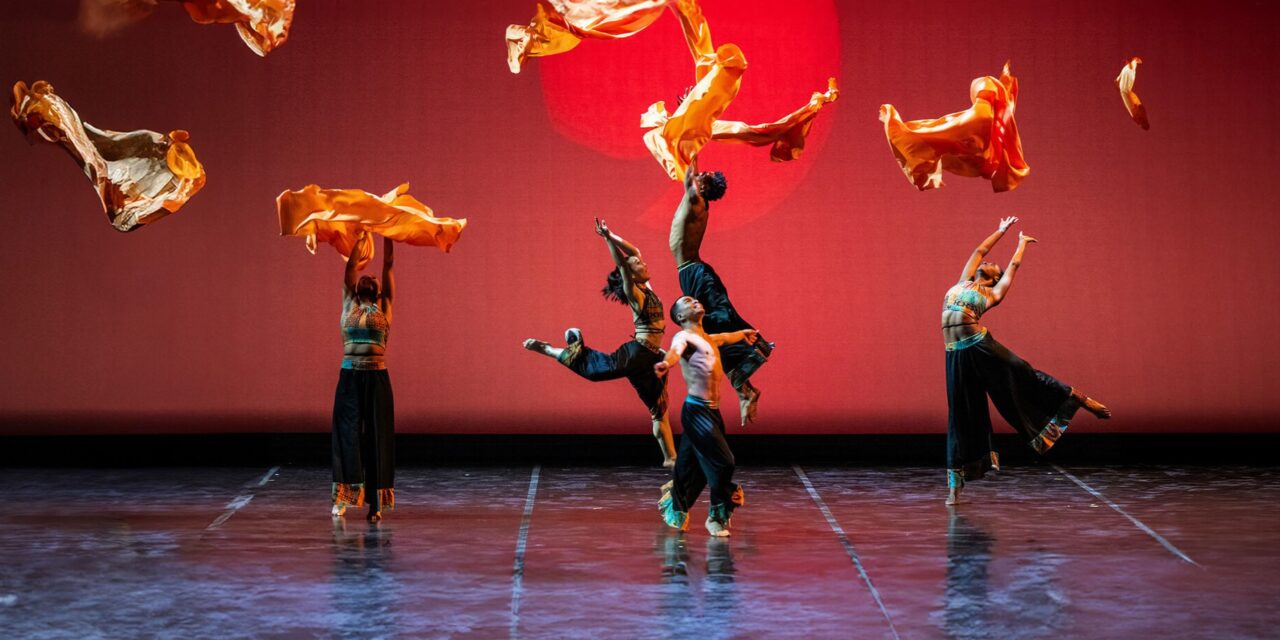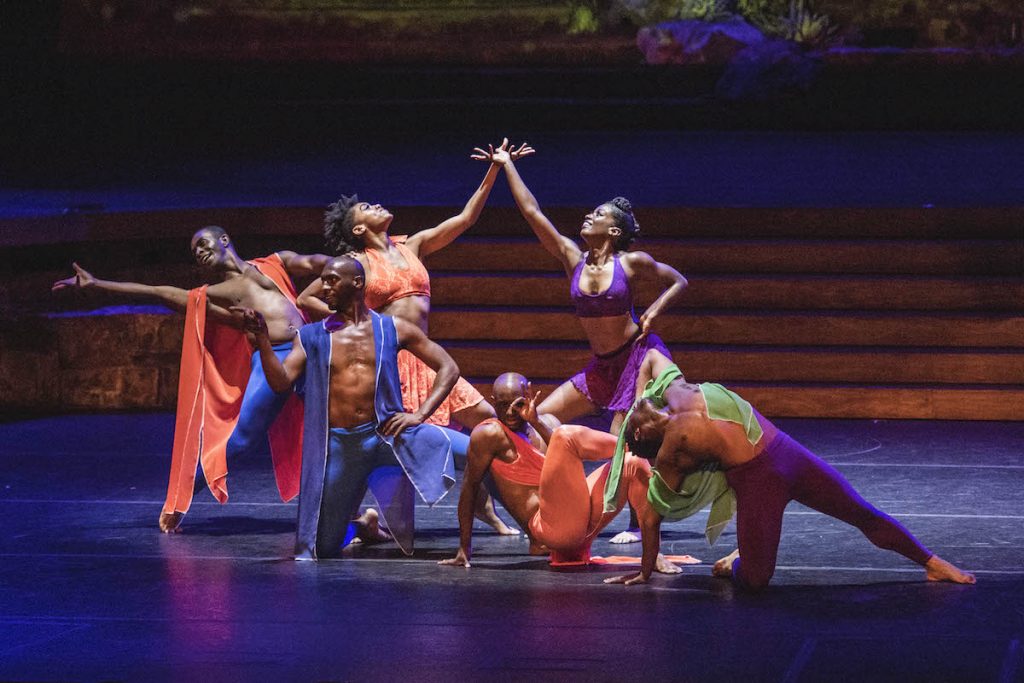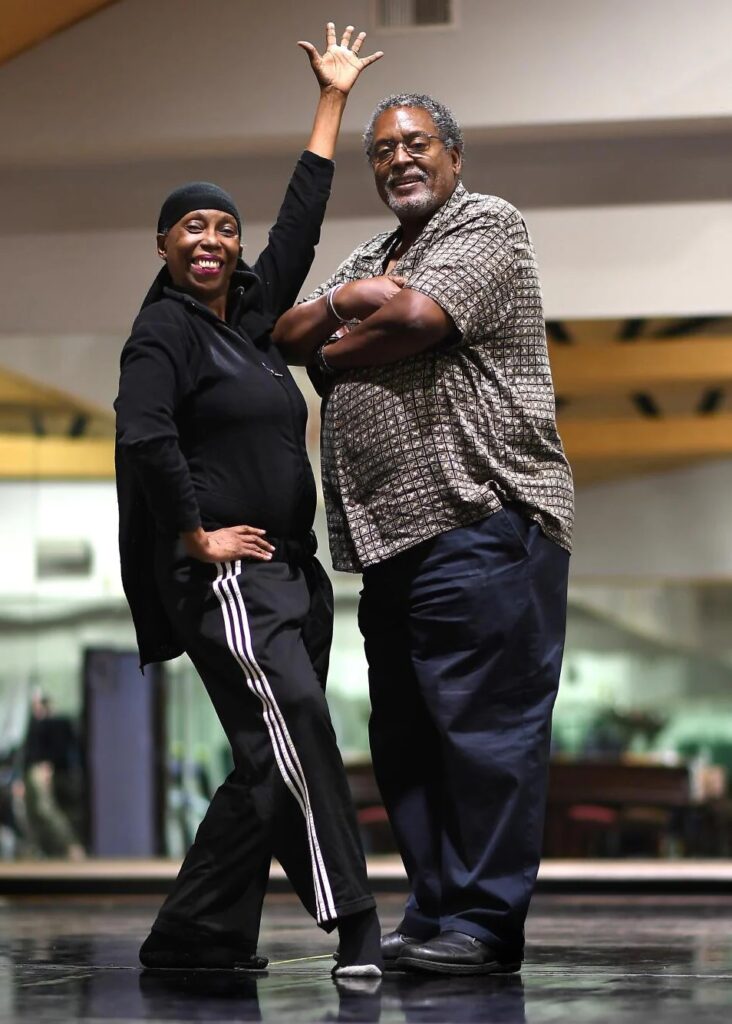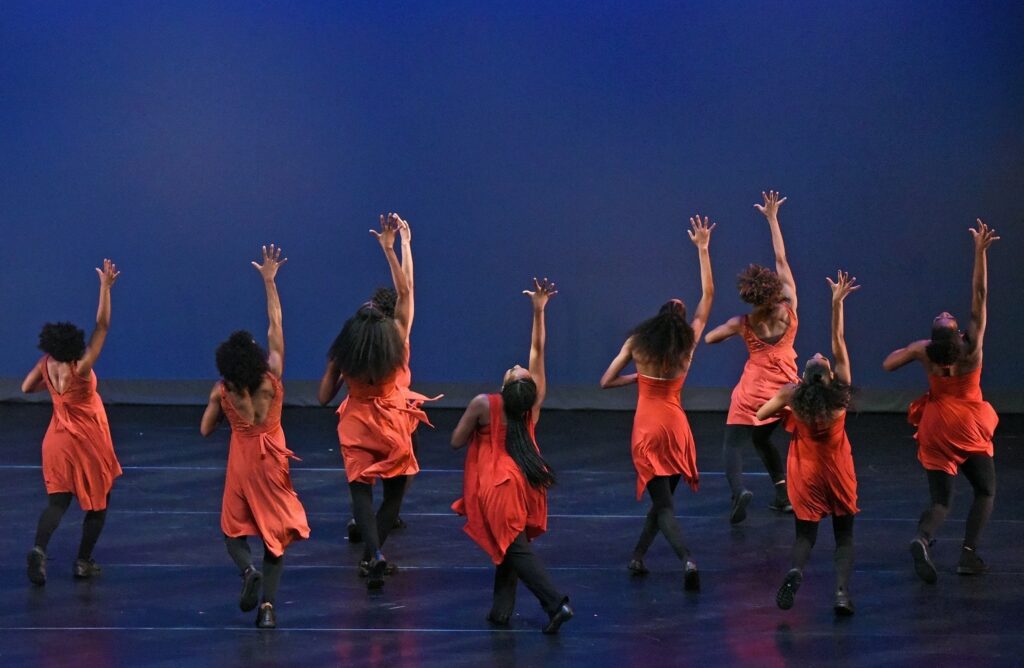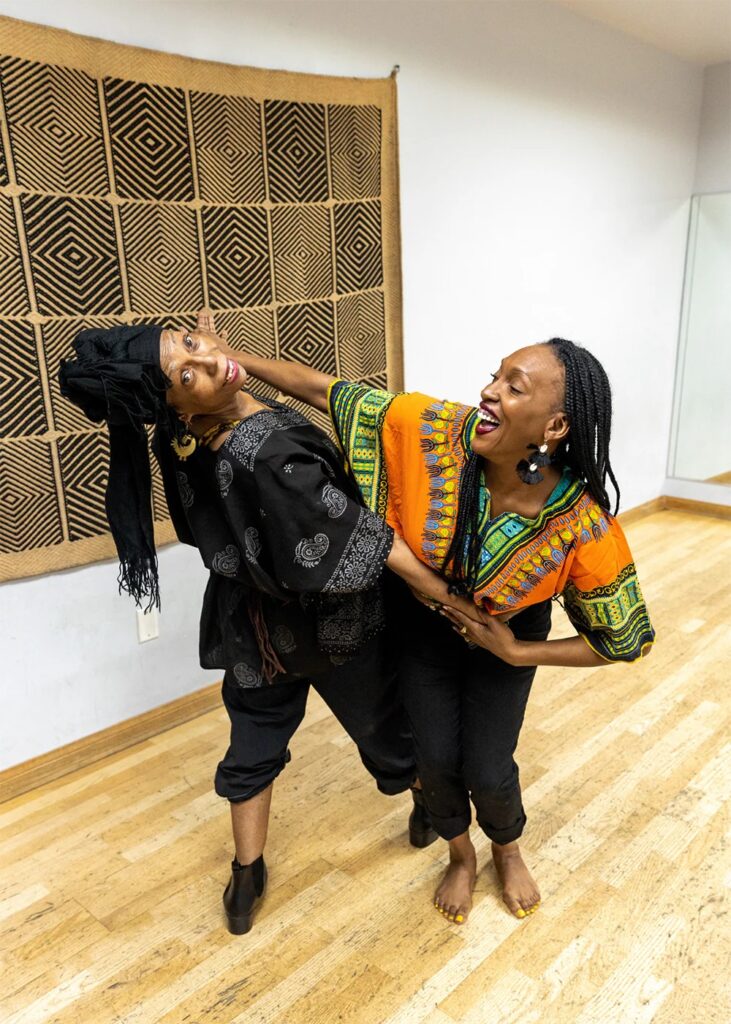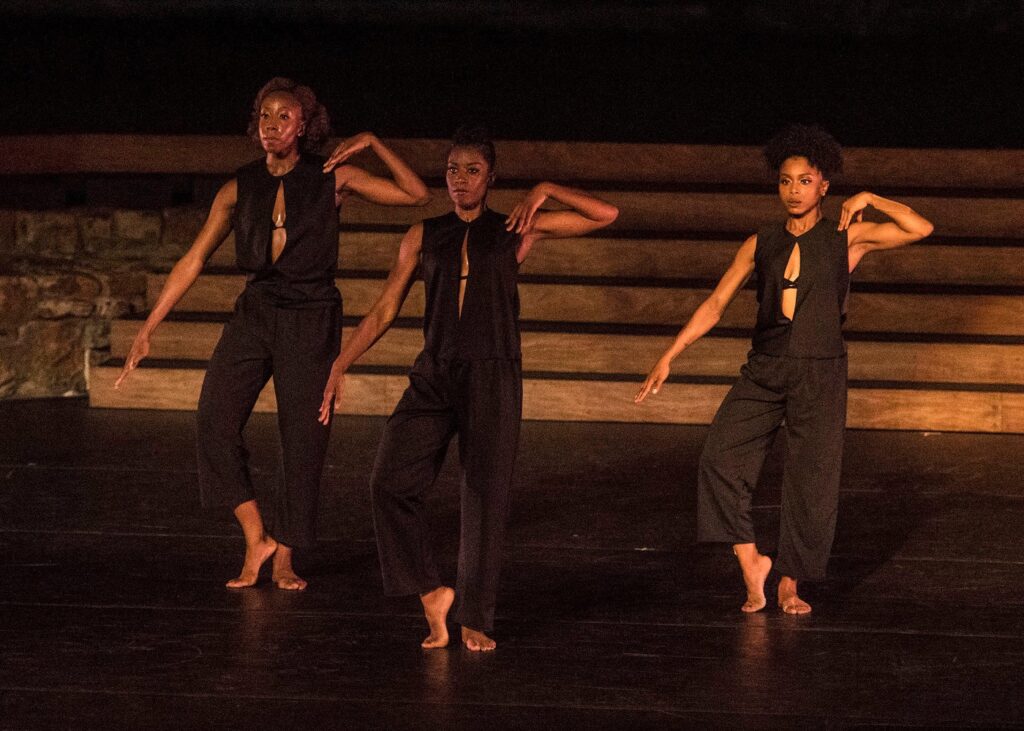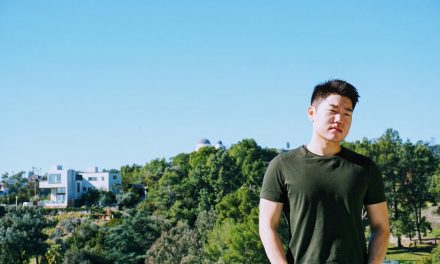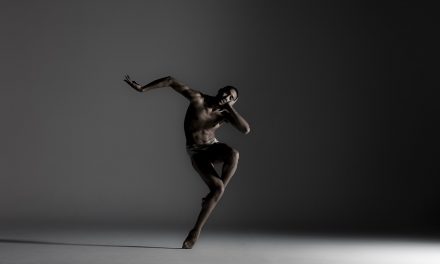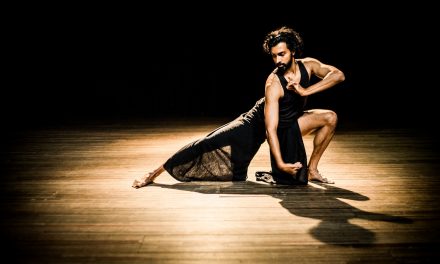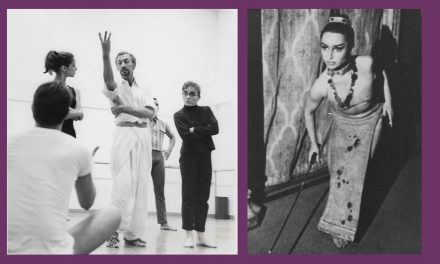Ten days before her company’s August 23 Ford Theatre performance celebrating her eponymous company’s 45th anniversary, Lula Washington arrived at the studio a bit early for a day brimming with rehearsals, pre-performance planning, and an afternoon visitor coming to watch rehearsal before an interview about the milestone concert. She opened the front door to a surge of water flooding the studio from a burst pipe. Her early arrival limited the water damage to the back of the building, sparing the largest rehearsal room, but the room storing company and personal archives was among those in ankle-deep water. As dancers rehearsed on an adjusted schedule, Lula and others waded through the water to remove the archives and deal with the flooded rooms. When the visitor arrived, the ongoing rehearsal was viewable, but the interview was quickly shifted to the next day as Lula simultaneously continued preparing the show and overseeing clean up. Just the latest obstacle she and Lula Washington Dance Theatre have confronted.
Lula Washington has built a national, award-winning reputation for her choreography, building partnerships with local and national companies, and for expanding the reach and respect for African-American-informed modern dance. She may be the face of LWDT, but it is a team effort that has and continues to fuel resistance and resilience to obstacles and events that have devastated other companies.
Heading that team is Erwin Washington, who since high school has had Lula’s back. Their partnership flows between their marriage and the dance company they co-founded in 1980. A respected reporter for the LA Times, Erwin gradually shifted to full time as the dance company’s Executive Director. Later, their daughter Tamica (now Tamica Washington-Miller) segued into the team, now as Associate Director and a respected choreographer in her own right.
Obstacles have punctuated Lula’s dance career from the beginning. She overcame a UCLA dance department that thought her too old at 22 to become a dance major, making suggestions she try New York. Once at UCLA, Lula persuaded faculty and guest artists to let her take graduate performance classes instead of the set undergraduate courses. After founding LWDT, the dance company acquired a studio, then confronted the 1994 earthquake that leveled the building, followed by a three year legal battle with the City of LA over rebuilding denials. Lula and Erwin won, then found and restored the current studio, only to endure the 2020 Covid pandemic that closed classes and performances. So, LWDT created an outdoor stage.
With that history, a burst water pipe and water damage is just the latest obstacle to be overcome.
The day after the flood. Lula juggled calls to insurance adjusters and water remediators alongside show prep, rehearsals and that pesky interviewer. (The resulting interview with dance writer Ann Haskins has been condensed for length and clarity).
Haskins: Thank you for fitting me in with all you are dealing with. For the upcoming anniversary show, your company has four decades of repertoire. You’ve chosen works by other choreographers for the first act and the second act has two new dances, one by Tamica and one by you. How did you decide what to include?
Washington: We had the concept of legacy all along, and we knew the works that we wanted to do, works of people that I admire and respect. The Talley Beatty work Mourner’s Bench is a solo from his suite Southern Landscape. I’ve always loved that solo, and we were finally able to get it, and now share it. One of our goals is to raise money to eventually do the whole five part Southern Landscape.
Haskins: How did the two Martha Graham solos, her 1937 Deep Song and 1932 Satyric Festival Song become part of the program.
Washington: Last year we were fortunate to be invited by the Martha Graham Company artistic director Janet Eilber to participate in Martha Graham 100 at the Soraya Theater on the 100th anniversary of Martha Graham founding her company. Actually, Donald McKayle made that connection happen. Mr. McKayle always talked to me about Janet because she danced in his company. Mr. McKayle also talked to her about my dance company. When the invitation to be part of Martha Graham 100 came up, I immediately looked through the Graham choreography. When I saw these two solos, Deep Song and Satyric Festival Song, I thought ‘Wow, these are two amazing solos, and I have two amazing girls that can handle this work.’ Martha Graham has her technique and her style, but to me, those two solos were the pieces that were more closely in the tradition of modern dance and not so much rooted in Graham technique, other than the contractions that are a signature of her work.
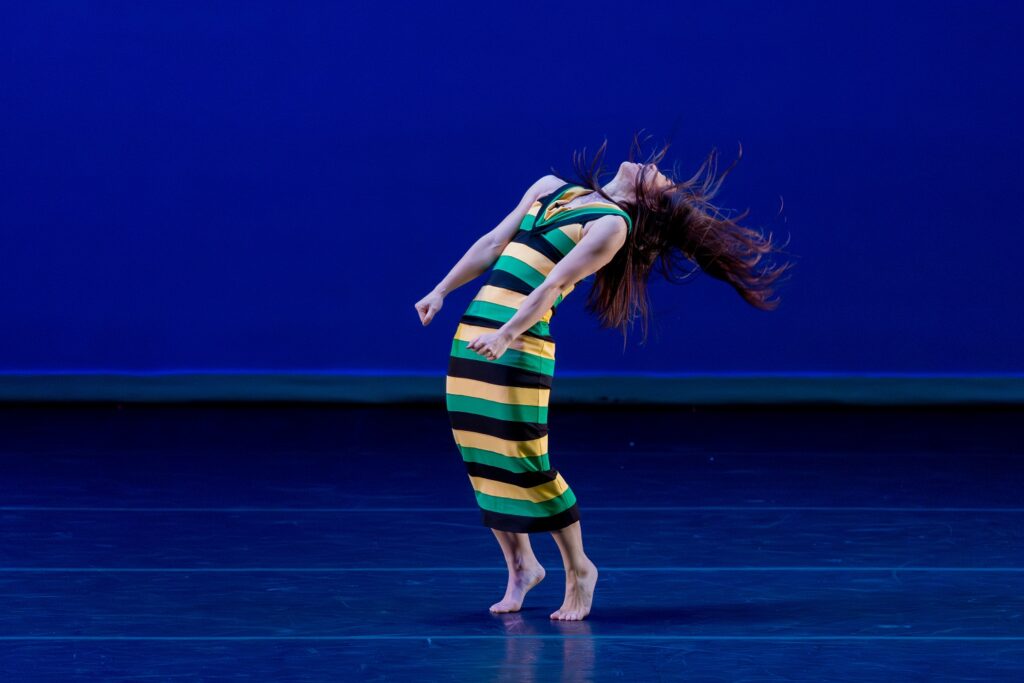
Kozue Kasahara of Lula Washington Dance Theatre in “Satyric Festival Song” – Photo by Luis Luque of Luque Photography.
Haskins: You also included Donald McKayle in the concert.
Washington: Yes. We round out the first half with the solo Angelitos Negros from Mr. McKayle’s Song of the Disinherited. Mr. McKayle was a dear mentor and friend to me and Erwin and Tamica. Tamica danced in Angelitos Negros. He loved her interpretation. That’s why we called the show Legacy, because those are all certainly legacies of our company. Also, we want people to know Martha Graham was here in LA first. People forget and say she was only a New York dancer. One of my quests is to correct that – Martha Graham, Alvin Ailey, Carmen de Lavallade were all in LA first.
Haskins: The second half of the program has two new works, Tamica’s and yours. Yesterday after I watched rehearsal, Tamica described the source of her work, a tale of knowledge ignored and believed lost until a troubled time when an elder came forward and shared the knowledge again.
Washington: Tamica had been working on And We Can Fly for quite some time, to get it the way she wants to have it. She had live music composed, has a spoken text, and she has a singer. Because the Ford is outside and under the stars, it will be a different experience than the audience saw in New Zealand at the Auckland Arts Dance Festival, where we did it on a proscenium stage.
We are so excited about the Ford, because we have been in the Ford many times. The difference is this time, this stage is much better. We both have live music and the dancing will be outside under the stars.
Haskins: I understand your work, The Master Plan, is a tribute to Pharoah Sanders with his music performed live.
Washington: The Master Plan is based on my concept of peace, love and happiness for everybody. I utilize fabric in different colors, an idea inspired by a Pharoah Sanders album cover, as ways to reconnect with a higher spiritual thing. His music will be live with singer Dwight Trible. I have some other works that kind of go in this direction, but not as much as this piece. It is about people being able to center themselves, to find the balance, to be in harmony with themselves, and then spread it out around, to create a sense of wellness, a sense of togetherness, a sense of ‘I don’t hate my neighbor.’ My neighbor has just as much right to be here as I do. It doesn’t matter if they’re from Ethiopia, China, Asia, Europe, whatever. We are all created equal. But the society that we’re living in right now is very hostile, in my opinion. It’s very negative, and it is spreading a mental illness. Anytime you have individuals being chased down the street, kids who are afraid to go school, kids being taken away from their parents, parents being taken from their car–all that craziness. That’s not America. So I want to say, let’s open our arms to everybody. Let’s include everybody in this big circle. My piece is about finding and restoring that missing balance and peace.
Haskins: You mentioned early on you were advised to go to New York, not UCLA. Did you ever consider moving to New York?
Washington: No, I would never go to New York. I mean, I went to audition for work, but I would never go there to live or to start a dance company. What I have here, I could never have in New York. I have a building. I have outdoor parking. I have plenty of light and sunshine. I have a lot of space. I could never have that in New York. Granted, I didn’t know that when I was young. What I did know is I did not like the cold weather and I didn’t want to be living in some small place with lots of stairs to get to it.
Haskins: Anything else you would like folk to know about the Ford concert?
Washington: All of the concert is from an Afrocentric point of view, all of the works, except for Martha Graham’s work. I consider myself an African American choreographer, a Black choreographer. Tamica considers herself the same. To me, Black culture connects with all cultures, all people, but when I was studying Martha Graham, she was creating dances of resistance way before me, including the two we are doing.
Haskins: How are things going with the burst pipe and prep for the show.
Washington: I’m trying to decide whether my early arrival was just a metaphor. You go along and a little bit is working, and then something comes at you, whether it’s a pandemic or some red tape or a burst water pipe. So this is really weird, depending on how you look at it. The back of the studio was flooded, but I said, ‘Thank you Jesus!, because I came to the studio early enough to catch it before it got worse. If I had decided to delay on that day, oh yeah! Faith in what we’re doing and belief in what we’re doing has kept me and Erwin and Tamica and everybody else around us going. And I always feel like sometimes, when you feel like there’s no hope, no light, I always see a little glimmer, and that’s what I keep going for until it’s better. Erwin always says we have to continue to find the other routes to make it happen. Even now with this water filling up in the back, that was the next worst thing since Covid, but we caught it in enough time that the water damage and the mildew or whatever won’t be anything as bad. We’ll be fully repaired to host the September Western Arts Alliance showcase, the October studio performances, and other partnerships we have coming, and for right now, we will focus on the Ford.
Once again, Lula Washington embodies the lyrics from Stephen Sondheim’s Follies anthem: “Good times and bum times, I’ve seen ’em all and, my dear, I’m still here.” Earthquakes, covid, burst pipes be damned. Lula Washington Dance Theatre is still here, and at the Ford Theatre on August 23.
Lula Washington Dance Theatre – 45th Anniversary Celebration at The Ford, 2850 Cahuenga Blvd. East, Hollywood; Sat., Aug. 23, 8 pm, $29-$48. Lula Washington Dance Theatre-Ford Tickets
For more on Lula Washington Dance Theatre go to the Lula Washington Dance Theatre website.
For more on the Western Arts Alliance go to Western Arts Alliance and tickets to the September 4 showcase at LWDT go to WAA Showcase
Written by Ann Haskins for LA Dance Chronicle.
Featured image: Lula Washington Dance Theatre – Photo courtesy of the artists.

